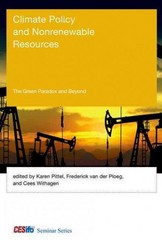Question
Suppose two neighbours (1 & 2) are deciding upon how many hours H1H1 and H2H2 to spend for keeping their common lawn tidy. Average benefits
Suppose two neighbours (1 & 2) are deciding upon how many hours H1H1 and H2H2 to spend for keeping their common lawn tidy. Average benefits are B1=10-H1+H2B1=10-H1+H2 and B2=10-H2+H1B2=10-H2+H1 per hour, implying that neighbour's hours increase but own hours decrease benefit as they decrease leisure time. Opportunity costs of lawn hours are constant c1=c2=$5c1=c2=$5.
a) Calculate the Nash equilibrium (NE) hours for both neighbours and draw their best-response functions on a graph indicating the NE. (4+3points)(4+3points)
b) Now suppose neighbour 1 could be either low-cost (c1L=$3c1L=$3) or high-cost (c1H=$7c1H=$7) type with equal probability and this private information is hidden from neighbour 2, whose cost remains at c2=$5c2=$5. Calculate the incomplete information or Bayesian-Nash equilibrium (BNE) and the full-information NE (FINE) number of hours. (4+4points)(4+4points)
c) Draw the best-response functions on a graph and clearly indicate the values of the BNE and FINE solutions. A big and clear diagram please. (4points)(4points)
d) For the high-cost type (H1HCH1HC), calculate the net benefits or profits (1HC1HC) for both BNE and FINE hours to determine if neighbour 1 has incentive to disclose his type to neighbour 2. (3points)(3points)
e) For the low-cost type (H1LCH1LC), calculate the net benefits or profits (1LC1LC) for both BNE and FINE hours to determine if neighbour 1 has incentive to keep his type hidden from neighbour 2.
Step by Step Solution
There are 3 Steps involved in it
Step: 1

Get Instant Access to Expert-Tailored Solutions
See step-by-step solutions with expert insights and AI powered tools for academic success
Step: 2

Step: 3

Ace Your Homework with AI
Get the answers you need in no time with our AI-driven, step-by-step assistance
Get Started


